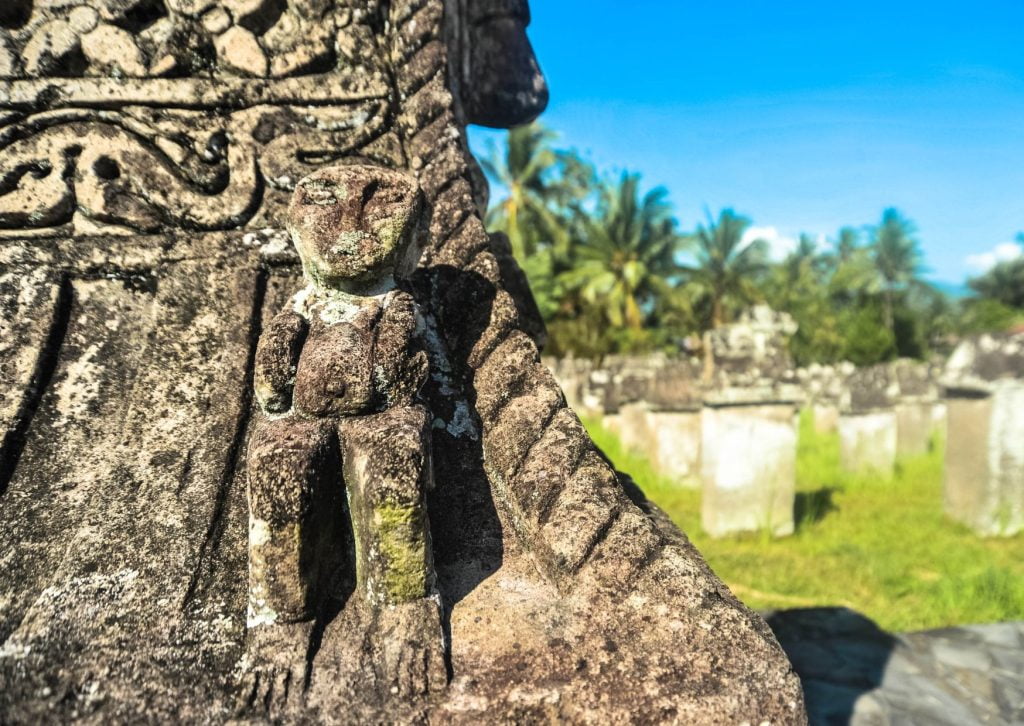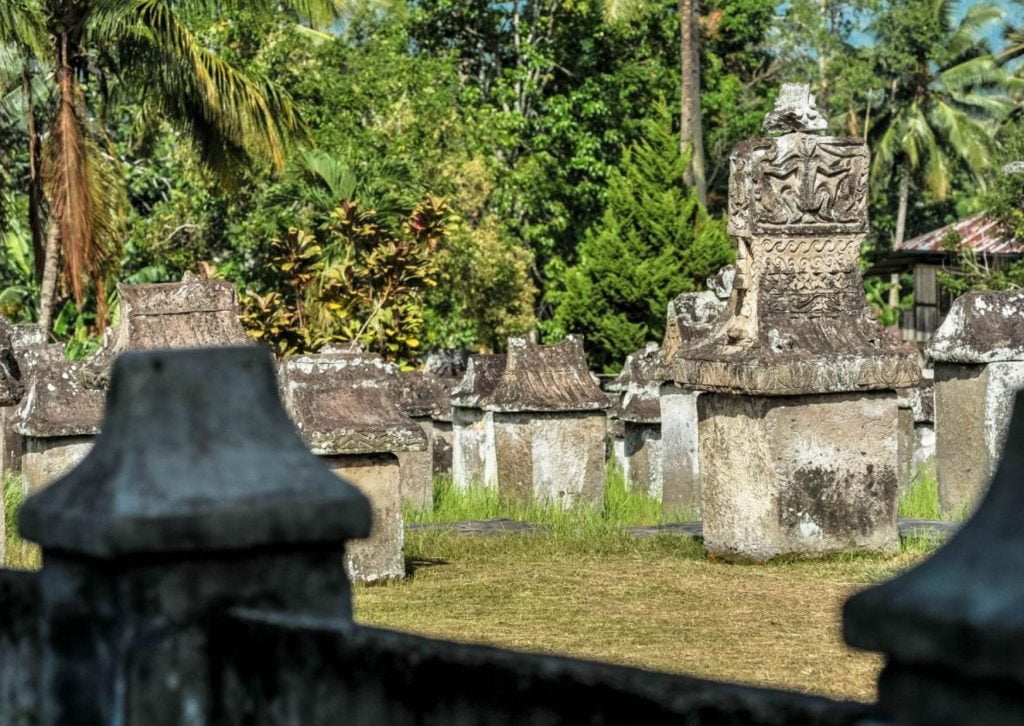Uncategorized
Waruga: Minahasa Burial Practice
Waruga is an above-ground stone structure used as a burial medium for the deceased. Waruga is located around residential areas. The size of waruga varies: large waruga can measure over 100 cm, medium-sized ones range between 50–100 cm, and small ones are under 50 cm. Waruga was originally utilized by the entire Minahasa community, but over time, its use became limited to those in higher social positions, such as Tonas (community leaders) and Walian (religious leaders).
Each Waruga is adorned with ornaments that symbolize the status of the person buried within. These decorations also represent the Minahasa people’s worldview and the stages of their life cycle. Human figures are commonly found as ornaments and are usually associated with the profession of the deceased. For instance, a human figure holding a weapon signifies that the deceased was a Tonas or a leader. Additionally, ornaments depicting childbirth indicate that the person buried was a midwife.

Animal motifs are commonly found in waruga carvings, reflecting the Minahasa people’s belief that certain animals act as messengers of God, delivering signs and warnings to humans. The snake, representing Lumimuut, the mother of Minahasa and the first woman, also serves as an intermediary for the deceased as they transition to the spirit realm and is seen as a symbol of danger and bad luck. Dog and chicken motifs depict the deceased’s favorite animals, while bird motifs symbolize the Manguni bird, a type of owl believed to be a divine messenger capable of providing signs and warnings to the Minahasa people. This bird also prominently features in regional logos, including that of the Evangelical Christian Church in Minahasa.
Plant motifs, referred to as tombaloi among the Minahasa people, symbolize fertility and are frequently seen in waruga carvings. The Minahasa believe that incorporating these plant motifs guarantees the deceased a proper existence in Kasendukana (heaven). Additionally, specific shapes such as triangles, double twists, swastikas, circles, and curves are also commonly found in the carvings. These geometric ornaments represent the beliefs of the Minahasa people, both related to life in this world and the afterlife. Since interactions with Europeans began, waruga with European clothing motifs have been found.

North Minahasa has the highest number of waruga, while the southern and southeastern regions have the fewest. Waruga are typically found beneath stilt houses, in gardens, cemeteries, and even in office areas. The ancient Minahasa people did not recognize the idea of separating their living spaces from burial sites. This separation began in the 1820s after an infectious disease outbreak in Minahasa in the same year. The Dutch Colonial Government prohibited locals from burying the dead in waruga around their homes. Today, the Minahasa people no longer use the waruga tradition; most have converted to Christianity and now follow Christian funeral practices.
References:
Fahriani, I., Marzuki, I., N, Paulina., Pratama, H., & Sari, V. Waruga: A stone coffin in Minahasa, North Sulawesi. Research Center for Prehistoric and History Archaeology – BRIN.
Kolibu, R., Sachari, A., Setiawan, P., & R, Tjetjep. (2021). Waruga ornament symbols; Identity and culture representation of the Minahasa people, Indonesia. Journal of Philosophy, Culture and Region, 54, 19-28. DOI: 10.7176/JPCR/54-03


